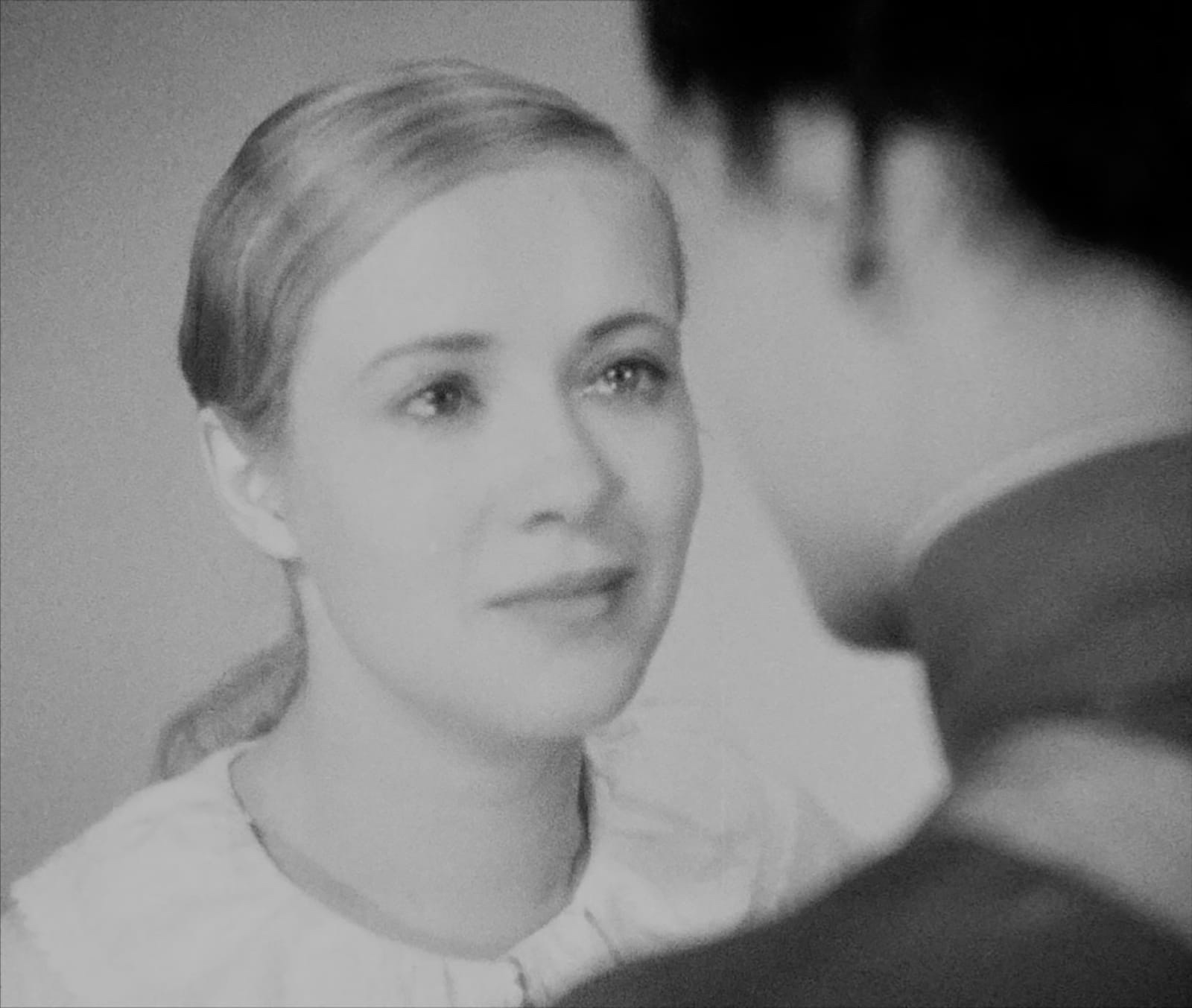RELATED ARTICLE
Mistress of Ceremonies
The Criterion Collection

The first real lesbian kiss in a film is an honor that rightfully belongs to Mädchen in Uniform. It’s true that a year earlier, in 1930, Marlene Dietrich played a tux-clad chanteuse who snogs a woman in a nightclub audience in Morocco, but Dietrich has no further contact with this female extra, and the kiss is cynically if efficaciously played to the star’s male love interest, a legionnaire (Gary Cooper) who’s watching her saucy performance intently. Unlike in Morocco, there are no titillated men to be found in Mädchen in Uniform. It is the schoolgirls who are jacked and lusty, the schoolmarms who are patriarchal and tyrannical. The kiss, which takes place behind the closed doors of a dorm, isn’t about who’s performing for whom. It’s about what it feels like for a girl.
Early in the film, a neat row of covetous schoolgirls in white dresses line themselves up on their knees, waiting for a goodnight kiss from their governess. Manuela, the new arrival, is mesmerized by Miss von Bernburg’s silhouette bestowing a kiss across the room: two shadows meld into one. The ritualistic eros of this tantalizingly unhurried two-minute sequence is undergirded by Manuela’s mounting anticipation as she awaits her turn, a credible insight into the longing of an adolescent girl from a time when female characters were habitually portrayed as symbols or foils.
It’s no surprise to learn that Mädchen in Uniform was directed by a woman.
Her name was Leontine Sagan. She was a Max Reinhardt–trained actor before she became one of the first female directors in Europe. German expressionism, which had dominated the previous decade, was still de rigueur in 1931, when Sagan shot her debut. The deliberate pacing, attention to mise-en-scène, and chiaroscuro shadow play in Mädchen in Uniform had often been used by Sagan’s male contemporaries to show the distorted view of a disturbed male protagonist driven to madness in a violent world. But Sagan combined stylistic elements from expressionism with then-uncommon naturalistic performances to evoke the tender subjectivity of the young female psyche as it had never been seen—by a woman behind the camera. A series of close-ups of tremulous, hungry, excitable faces offers distinct insights into how each schoolgirl takes her pleasure. Manuela is last in line, but when she receives her kiss in an amatory two-shot, it’s not on the cheek, as it was with everyone else. Miss von Bernburg kisses her full on the lips.

